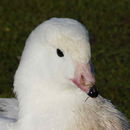en
names in breadcrumbs



Chloephaga melanoptera (Andean Goose) is a species of birds in the family Anatidae. They are found in The Neotropics. They rely on flight and drag powered swimming to move around.
EOL has data for 19 attributes, including: